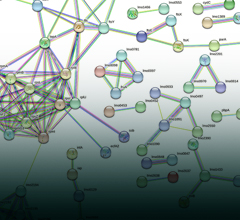Chemical Food and Environmental Safety
The Laboratory is primarily engaged in the detection of residues, contaminants, and chemical additives in food and feed, as well as in assessing their composition and preservation status. The laboratory also conducts research and experimental activities for the development of new analytical methods applied to food products, with a focus on evaluating the potential risks of human exposure to chemical contaminants and residues. Additionally, it participates in technical assistance programmes to support third countries.
The Laboratory primarily conducts food and feed control activities through:
- Detection of veterinary drug residues, pesticides, mycotoxins, and environmental contaminants such as halogenated persistent organic pollutants (POPs) and metals in animal- and plant-based products.
- Analysis of chemical additives in food and feed.
- Determination of compositional parameters to evaluate the nutritional value and preservation status of food and feed.
- Monitoring of environmental contaminants in surface waters.
These analytical activities are carried out within the framework of national official control plans for food and feed safety.
The Laboratory also conducts toxicological investigations in cases of suspected poisoning in wildlife and companion animals.
As a natural evolution of post-Chernobyl monitoring efforts, the Laboratory has implemented a system for detecting environmental radioactivity in food matrices.
Furthermore, the Laboratory handles the chemical analyses required by the National Veterinary Medicines Control Plan, coordinated by the Ministry of Health, to verify compliance with marketing standards.
In the field of research, the Laboratory is involved in the development and validation of new analytical methods, particularly for the detection of emerging residues and contaminants in food products. It actively participates in national and international research projects focused on food safety, exposure scenarios, and the potential health effects on human populations.
Finally, the Laboratory collaborates on numerous international technical assistance projects aimed at introducing and improving analytical methods for the detection of chemical residues and contaminants in the food chain.
- + - Our Research
-
- + - Head
-
Giampiero Scortichini
Head
He is an expert in the analysis of residues, chemical contaminants, and additives in food products. His work has focused in particular on issues related to the presence of persistent organic pollutants in the food chain, and he led the National Reference Laboratory for this area for over a decade.
He is an expert in the analysis of residues, chemical contaminants, and additives in food products. His work has focused in particular on issues related to the presence of persistent organic pollutants in the food chain, and he led the National Reference Laboratory for this area for over a decade.
He has coordinated numerous scientific research projects and international technical assistance programmes, and has held teaching positions at the University of Perugia and the University of Teramo.
He is the author of over 70 scientific publications in indexed journals.
- + - Departments
-
Mycotoxins, Plant Toxins and Marine Biotoxins
Go to the UnitThe unit is responsible for the analytical determination of mycotoxins and plant toxins in food intended for human consumption and animal feed, as well as marine biotoxins and other toxins in fishery products. In response to the growing concern over environmental contamination by microplastics, the unit has established a dedicated analytical section focused on the characterisation of these substances in food products, using advanced instrumental analysis techniques.
Contaminants and Pesticide Residues
Go to the UnitThe unit conducts analyses of pesticide residues, inorganic contaminants, and trace elements in food and feed, along with the detection of process contaminants and persistent organic pollutants (POPs). It also operates as the National Reference Laboratory (NRL) for Halogenated Persistent Organic Pollutants in food for human and animal consumption, carrying out specialised monitoring and analysis in this critical area.
Food Chemistry and Drug Residues
Go to the UnitThe Unit conducts analyses to detect residues of pharmacologically active substances in animal-derived products intended for human consumption and veterinary drugs in animal feed. Its activities also include the monitoring of chemical additives in food and feed, the assessment of composition and preservation status, the detection of toxic substances in cases of suspected animal poisoning, and the monitoring of veterinary medicines available on the market.
- + - Selected papers
-
Titolo Articolo 1
Autori articolo 1
Titolo Articolo 2
Autori articolo 2
Titolo Articolo 3
Autori articolo 3
Titolo Articolo 4
Autori articolo 4










